In a significant breakthrough for cultural heritage preservation, 37 stolen gold coins linked to the legendary 1715 Spanish treasure fleet have been recovered after a lengthy investigation involving the Florida Fish and Wildlife Conservation Commission (FWC) and the FBI. The treasure trove, worth over $1 million, includes a rare “Holy Grail coin” that was illegally sold at auction. This recovery highlights the ongoing battle to protect priceless historical artifacts from illegal trafficking and theft.
The 1715 Spanish Treasure Fleet and Its Lost Treasure
This Article Includes
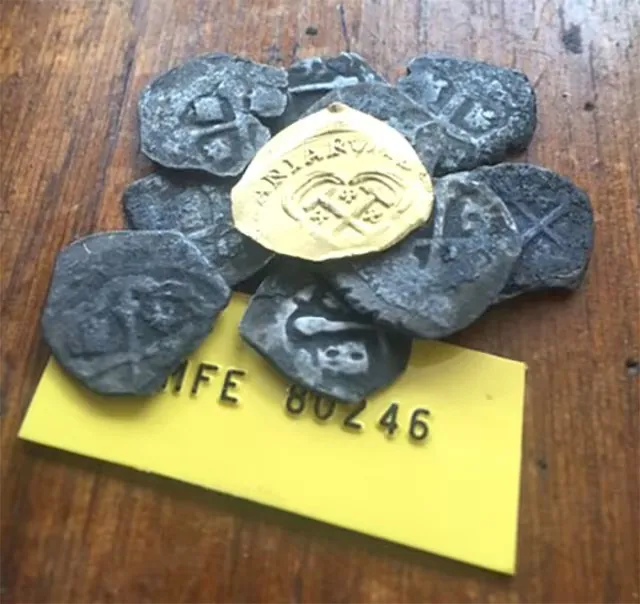
On July 31, 1715, a fleet of 11 Spanish ships carrying vast treasures from the New World sank off the coast of Florida due to a devastating hurricane. Among the precious cargo were gold and silver coins minted in Lima, Peru, between 1697 and 1712. While some treasure was recovered in the years following the disaster, much of it remained lost beneath the ocean for centuries. In the 20th and 21st centuries, modern treasure hunters discovered several of the wrecks, leading to the ongoing recovery of valuable artifacts from these sunken ships.
The Stolen Coins: A Precious and Rare Collection
The 37 recovered gold coins were among the riches salvaged from the wrecks of the 1715 fleet, including several rare and unique pieces. Among these is a one-of-a-kind gold coin from 1709, mistakenly stamped with a silver coin’s die, earning it the nickname “Holy Grail coin.” This particular piece, which was unlawfully sold for $50,000 at an auction, is considered invaluable due to its rarity and historical significance. The other stolen coins, mostly minted in Lima, Peru, feature a variety of denominations, with the largest weighing an ounce.
The Theft and the Investigation
The coins were initially uncovered in 2015 by the Schmitt family, who were contracted by 1715 Fleet-Queens Jewels, LLC, to salvage treasure from the wrecks off Florida’s Treasure Coast. However, 50 of the 101 coins they recovered were never reported, and an investigation soon revealed that they had been stolen and sold illegally.
In June 2023, a state and federal probe was launched after evidence surfaced linking Eric Schmitt, a member of the Schmitt family, to the illicit sale of these valuable coins. Schmitt was found to have sold several of the coins between 2023 and 2024. Authorities issued multiple search warrants and recovered the stolen coins from private residences, safe deposit boxes, and auctions. Some of the coins were even traced back to a Florida-based auctioneer who unknowingly purchased them from Schmitt.
Forensic Breakthroughs and the Role of Technology
Advanced digital forensics played a crucial role in the investigation. Metadata and geolocation data connected Eric Schmitt to photographs of the stolen coins, which were taken at his family’s condominium in Fort Pierce, Florida. Further investigation revealed that Schmitt had placed some of the stolen coins on the ocean floor in 2016, where they were discovered by new investors, further complicating the case.
The Recovery and Preservation Efforts
The recovered coins were authenticated with the help of historical preservation experts, ensuring their authenticity and historical value. The ongoing recovery efforts are a reminder of the importance of safeguarding Florida’s rich cultural heritage, which has been subject to exploitation and illegal trafficking for decades. While the majority of the stolen coins have been recovered, 13 coins remain unaccounted for, and it is believed they have already been illegally sold.
The Larger Implications for Cultural Heritage Protection
This case underscores the necessity of protecting historical artifacts, not only for their monetary value but for their cultural significance. Artifacts from the 1715 Spanish treasure fleet, like these gold coins, are protected by state and federal law due to their historical importance. The investigation and subsequent recovery serve as a warning to individuals and organizations that attempt to profit from exploiting these invaluable pieces of history.
Conclusion
The recovery of these 37 gold coins marks a significant achievement in the ongoing fight to protect cultural heritage and prevent the illegal trafficking of historical artifacts. It also highlights the importance of modern forensic tools and investigative techniques in tracing stolen treasures and holding criminals accountable. As the investigation continues, the recovered coins will be preserved as a testament to the rich history of Florida and the enduring legacy of the 1715 Spanish treasure fleet.
Also Read:
THIS IS ONLY A BLOG POST FOR INFORMATION – WE DO NOT BUY, SELL, OR APPRAISE THESE ITEMS

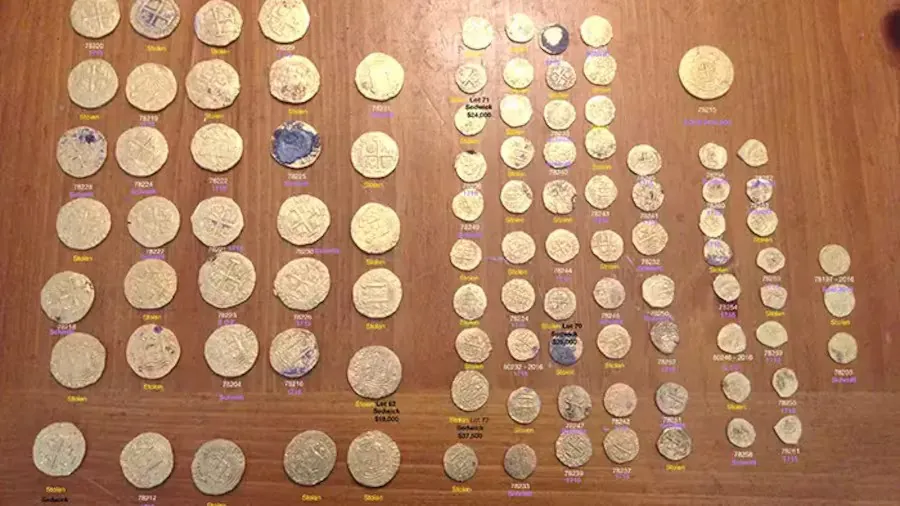
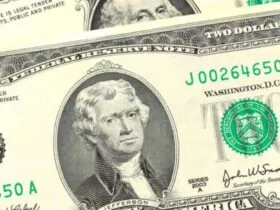
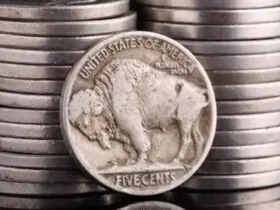
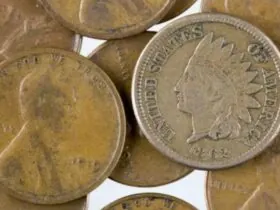

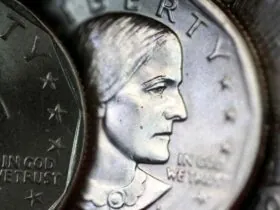
Leave a Reply